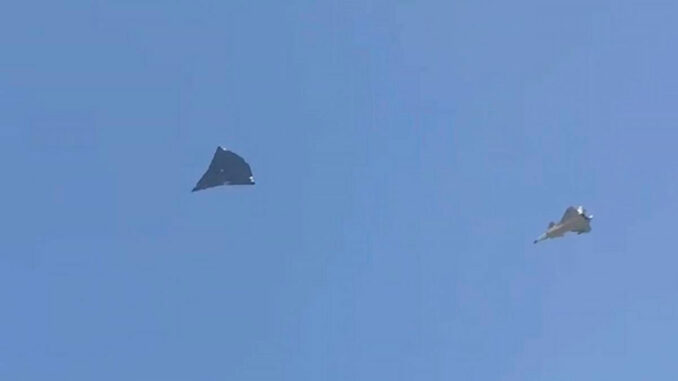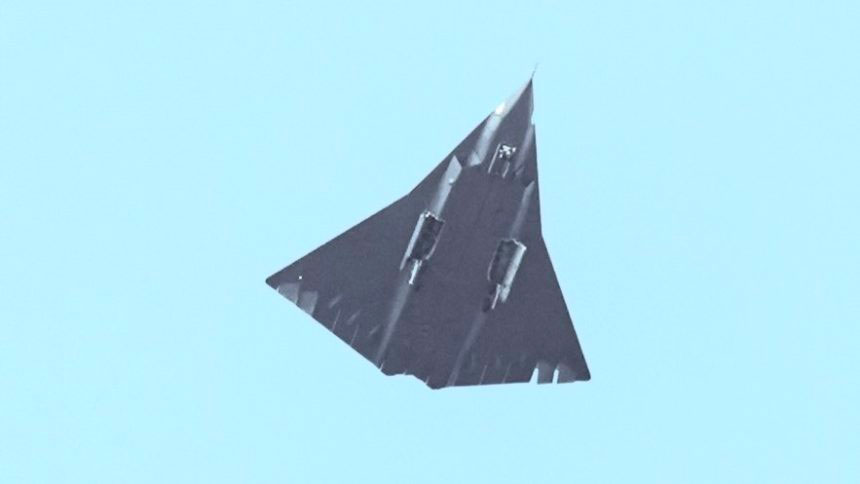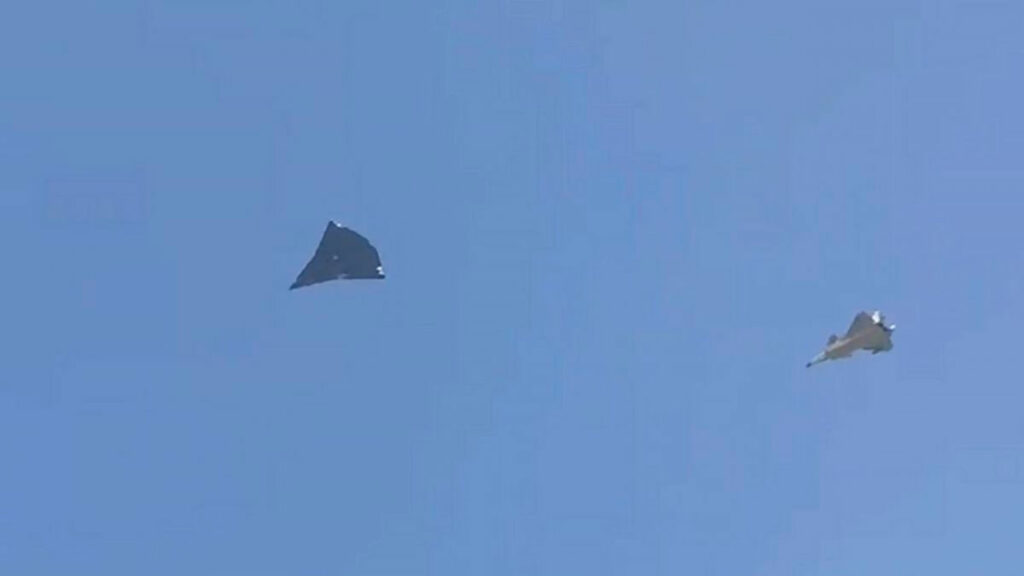
Technical analysis of China’s new tailless stealth aircraft, their presumed capabilities, and global strategic implications.
On December 26, 2024, China unveiled two new tailless stealth aircraft. One, dubbed the “J-36”, is a heavy three-engine aircraft optimized for stealth and endurance. The second, more compact, strikes a balance between stealth and maneuverability. These aircraft illustrate China’s rapid rise in the field of advanced military aeronautics. Their impact on power projection strategies in the Indo-Pacific region could be considerable.
The emergence of Chinese stealth aircraft
December 26, 2024 marked an important milestone with the simultaneous appearance of two Chinese stealth aircraft. These aircraft feature a tailless configuration and advanced stealth technologies. China thus asserted its ambition to become a major player in the field of new-generation combat aircraft.
The first aircraft, nicknamed the “J-36”, adopts a delta-diamond design with three engines. This unique configuration significantly reduces the radar signature, while increasing the range, estimated at 3,000 km. Its maximum take-off weight could reach 52 tonnes. The second aircraft, probably produced by Shenyang Aircraft Corporation, is lighter and better suited to multi-role and air superiority roles.
The simultaneous presentation of these two models is a strong signal that China is ready to compete with American initiatives such as the NGAD (Next Generation Air Dominance) program. Potential capabilities of these aircraft include enhanced stealth, advanced sensor systems and the ability to network with collaborative drones.

Technical features of the new aircraft
The J-36 is distinguished by several innovative technical features:
- Stealth: The absence of tailplane and delta-diamond design significantly reduce multi-band radar detection. Air inlets incorporate sophisticated configurations to minimize infrared signatures.
- Propulsion: Three engines provide high power, essential for maintaining high-speed performance and super-cruise (supersonic flight without afterburner) between Mach 1 and 1.5. Increased energy consumption powers complex electronic systems, including AESA radars and energy weapons.
- Sensor systems: advanced side antennas and electro-optical systems offer 360-degree radar coverage and superiority in surveillance roles.
As for the Shenyang model, it combines stealth and maneuverability thanks to vectored thrust engines. Its maximum take-off weight is estimated at 36 tonnes, with a range of 2000 km.
Strategic implications for the Indo-Pacific region
These developments strengthen China’s military capabilities in a strategic region of rising tensions. Increased range and the ability to network with drones increase the threat to critical infrastructure in neighboring states, notably Taiwan and Japan.
The US armed forces, which rely heavily on aerial refueling, are particularly vulnerable to these new aircraft. With an estimated operational range of 1,500 to 2,000 km, the J-36 could target tankers well beyond the Western Pacific island chain.
Comparison with Western programs
The J-36’s advanced design is reminiscent of American NGAD efforts. However, budgetary decisions and delays in the NGAD program may allow China to close the technology gap. Currently, US programs emphasize collaborative drones and extended-range weapons to compensate for the short range of traditional fighters like the F-35.
Chinese aircraft, if they reach a sufficient level of maturity, could reverse the strategic balance in the Indo-Pacific region. This prospect underlines the importance for the United States and its allies to accelerate their own technological initiatives.

Future prospects and challenges
These two aircraft represent a significant step in the modernization of the Chinese army. However, several questions remain unanswered:
- Production: Will China’s industrial capabilities enable mass production?
- Operationalization: Will the systems be able to function optimally in complex conflict scenarios?
- Western response: Can the USA and its allies maintain their technological lead while managing budget constraints?
The success of Chinese aircraft could redefine air strategies in the decades to come, consolidating China’s position as military leader in the Indo-Pacific.
War Wings Daily is an independant magazine.